Noise suppression technologies/case study introduction (Automotive)
Automotive Ethernet for ADAS Noise suppression measures for 1000Base-T1 (3)
INDEX
- Spread of Automotive Ethernet in Automobiles
- Signal Transmission by Automotive Ethernet
- Noise Issues in Automotive Ethernet
- Factors for Generation of Common Mode Noise
- Noise Suppression Measures for Automotive Ethernet
- Notes on CMCCs Used in Automotive Ethernet
- Measures for Preventing Conducted Emission
- Testing of Immunity (DPI) Measures
- Key Points for Testing of Immunity (DPI) Measures
- Conclusion
7. Measures for Preventing Conducted Emission
Conducted Emission Measurement Conditions
The conducted emission was measured (150Ω method) using a 1000Base-T1 EMC test board.
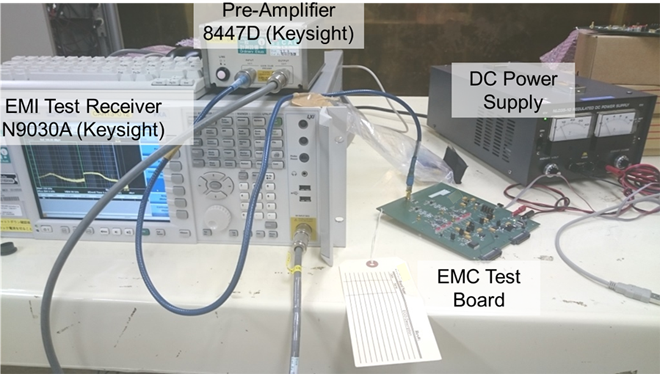
| Frequency | 150k – 1600MHz |
|---|---|
| RBW | 9kHz (150k-30MHz) 120kHz (30-1600MHz) |
| Dwell Time | 5ms/Hz |
| Step Size | 3.6kHz (150k-30MHz) 48kHz (30-1600MHz) |
| EUT | 1000Base-T1 EMC Test Board |
| EMI Test Receiver | N9030A(Keysight) |
| Pre-Amplifier | 8447D(Keysight) |
| DC Power Supply | GP035-5(Takasago) |
Comparison of Noise Attenuation Results for Different CMCCs
Common mode noise is conducted out from the signal line on the 1000Base-T1 EMC test board, and measurement is performed using an EMI receiver.
In this study, the CMCCs were changed to compare the noise.
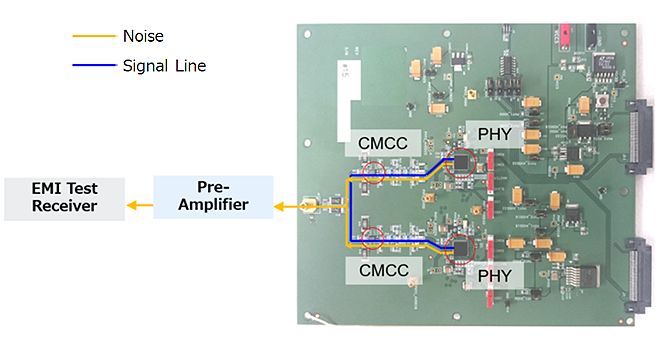
CMCC Used in Conducted Emission Prevention Measures
For test CMCCs, we used the DLW32MH101XT2 (CMCC for 1000Base-T1), and for comparison, we used the DLW43MH201XK2 (CMCC for 100Base-T1) and the DLW32SH101XK2 (CMCC for CAN).
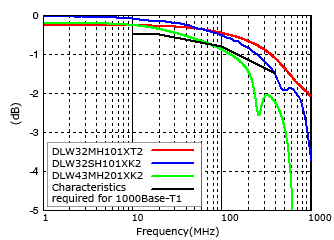
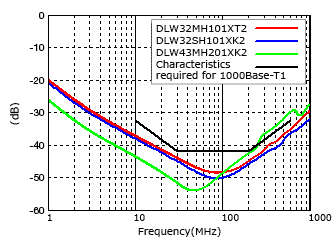
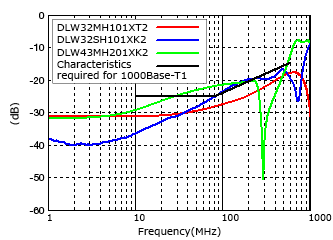
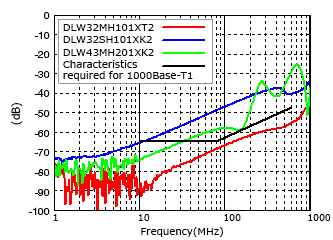
Results of Conducted Emission Measurement
The results of the conducted emission measurements showed that the DLW32MH101XT2 designed for 1000Base-T1 was most effective in reducing noise and satisfied the limit values. The DLW43MH201XK2 and DLW32SH101XK2 were unable to reduce the noise enough to satisfy the limit values.
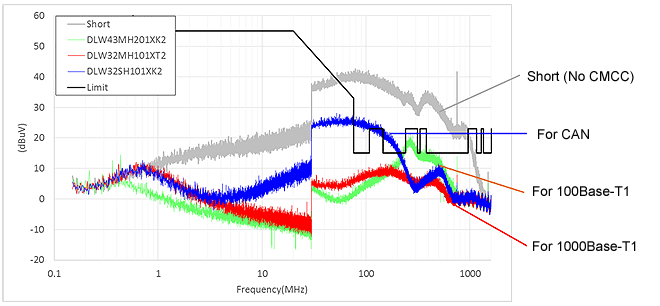
Noise Generating Mechanism
It is thought that one factor in the different noise suppression results by the CMCCs is the effect of the mode conversion characteristic Ssd12 of the CMCC. When the Ssd12 value is high, a high proportion of the differential mode signals that were input are converted to common mode noise, and as a result, the noise level increased.
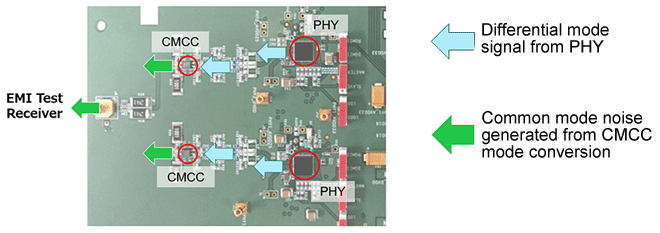
Key Points on Noise Suppression
The conducted emission measurement results indicate how much common mode noise can be reduced by Scc21 at low frequencies and how much of the amount converted to common mode can be reduced at high frequencies by the Ssd12 mode conversion characteristics.
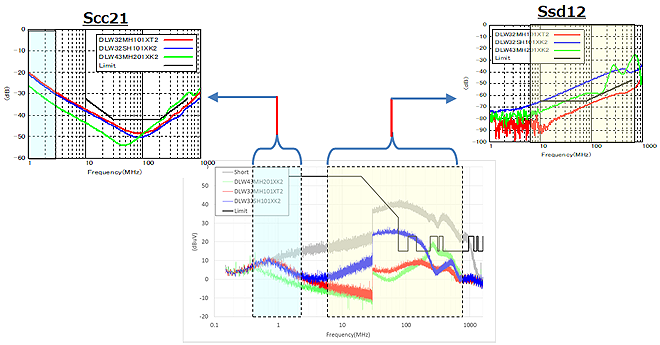
Notes on Board Design
The key points for board design were revealed through the CMCC evaluations.
When the same CMCC sample for 1000Base-T1 was installed in the test board under the same conditions, the noise levels were different, and a failing result occurred in one of the boards.
* Failing results can be obtained for some statuses of the test board even when the CMCC samples are identical.
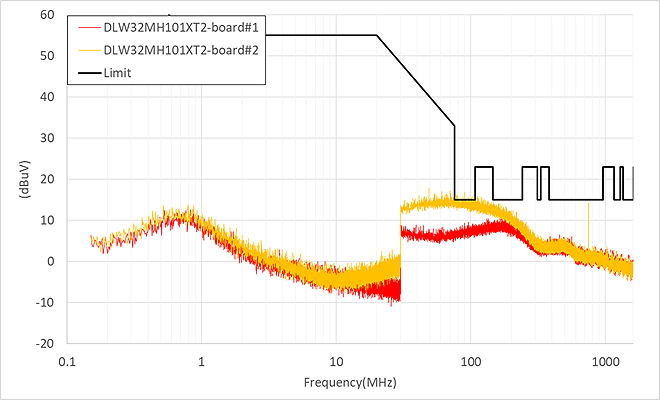
When the transmission route characteristics on the board were analyzed, we found differences in the mode conversion characteristics at the CMCC output side and that the values for board #2 were high.
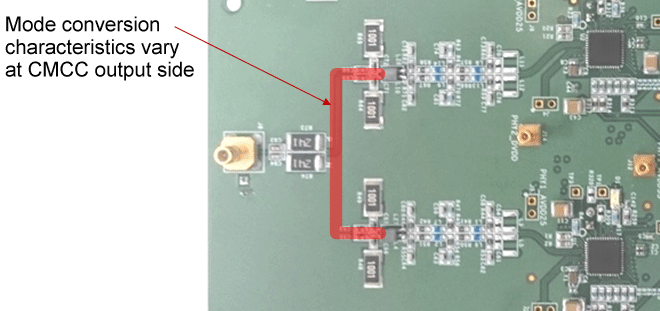
One likely factor in the different conducted noise levels by the boards was that the differential mode signals after passing through the CMCC were converted to common mode noise on the board.
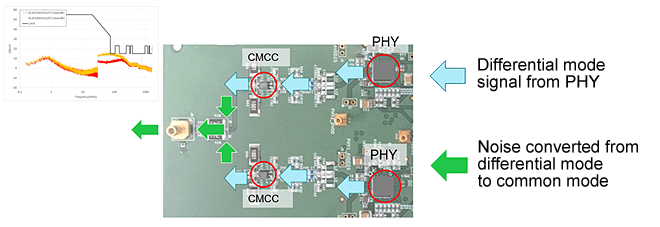
The key points for the occurrence of mode conversion include the resistor at the CMCC output side, capacitor, and board wiring, and imbalances are thought to arise due to variation in the characteristics of these components.
For this reason, the sections other than the CMCC also require careful attention for maintaining the characteristic balance between the lines.
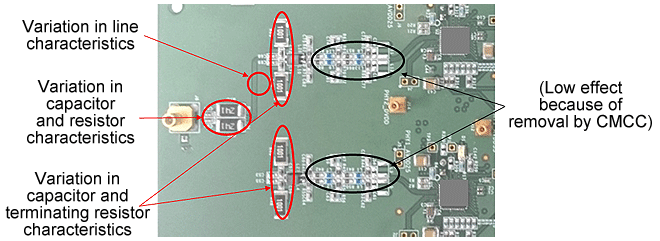
Conducted Emissions in 100Base-T1
When the same conducted emission measurements were performed for 100Base-T1, the limit values were exceeded when using the DLW32SH101XK2 for CAN, but the DLW43MH201XK2 designed for 100Base-T1 was effective enough in reducing noise to satisfy the limit values.
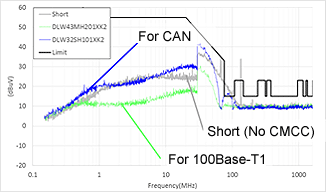
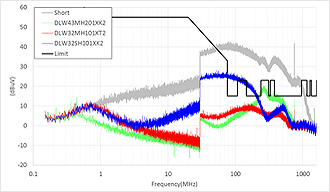
Differences Between 100Base-T1 and 1000Base-T1
The frequency component contained in the differential mode signal is different between 100Base-T1 and 1000Base-T1, and so the required mode conversion characteristics are also different.
For this reason, a CMCC that was designed for meeting the respective standard must be selected.
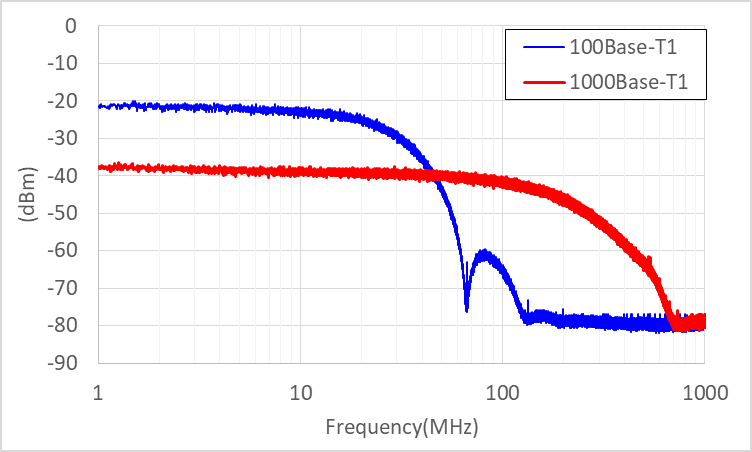
- Continue reading:Testing of Immunity (DPI) Measures
